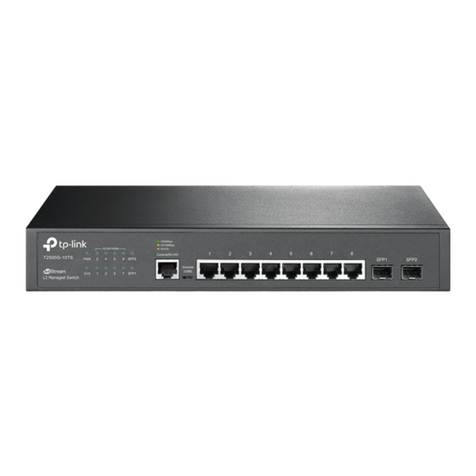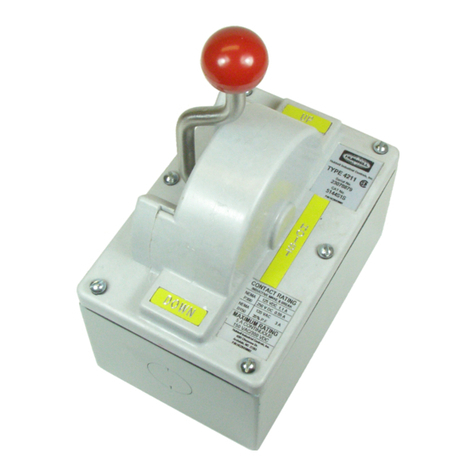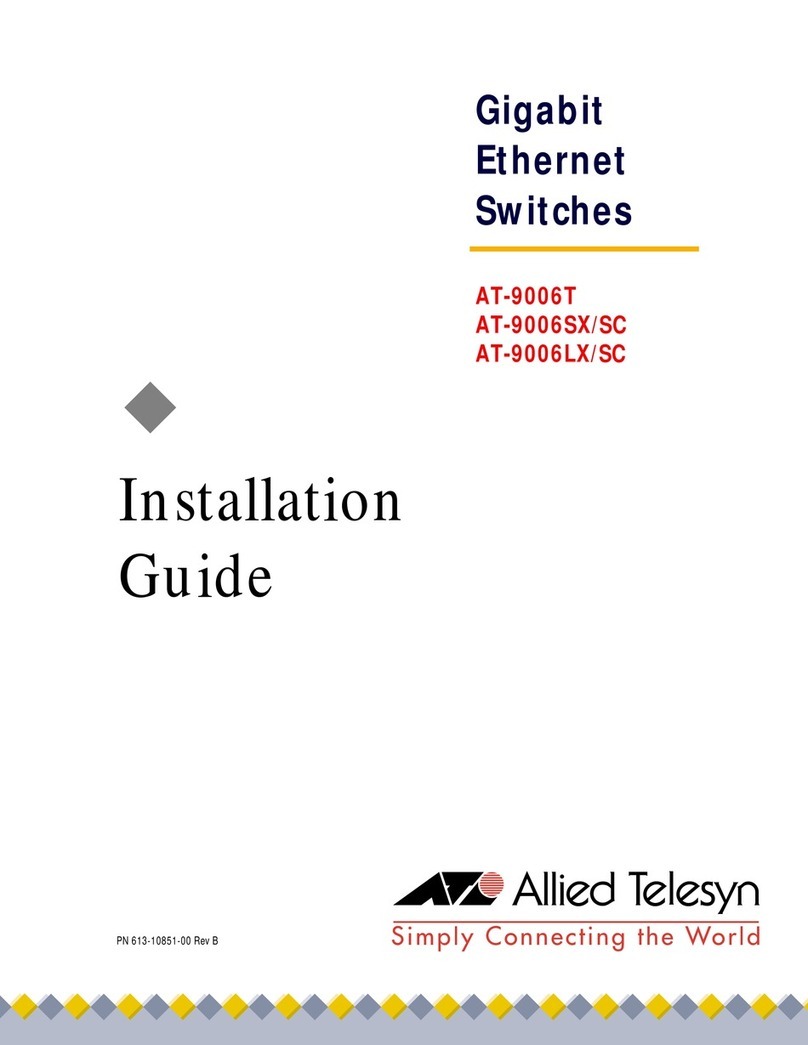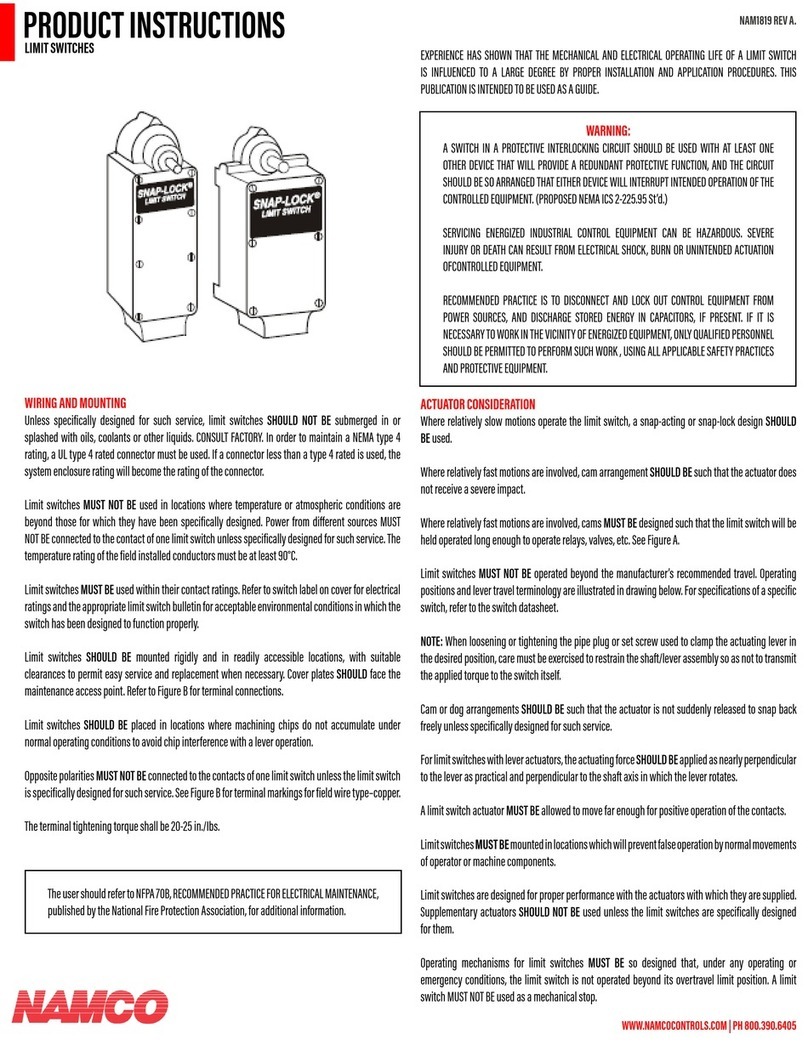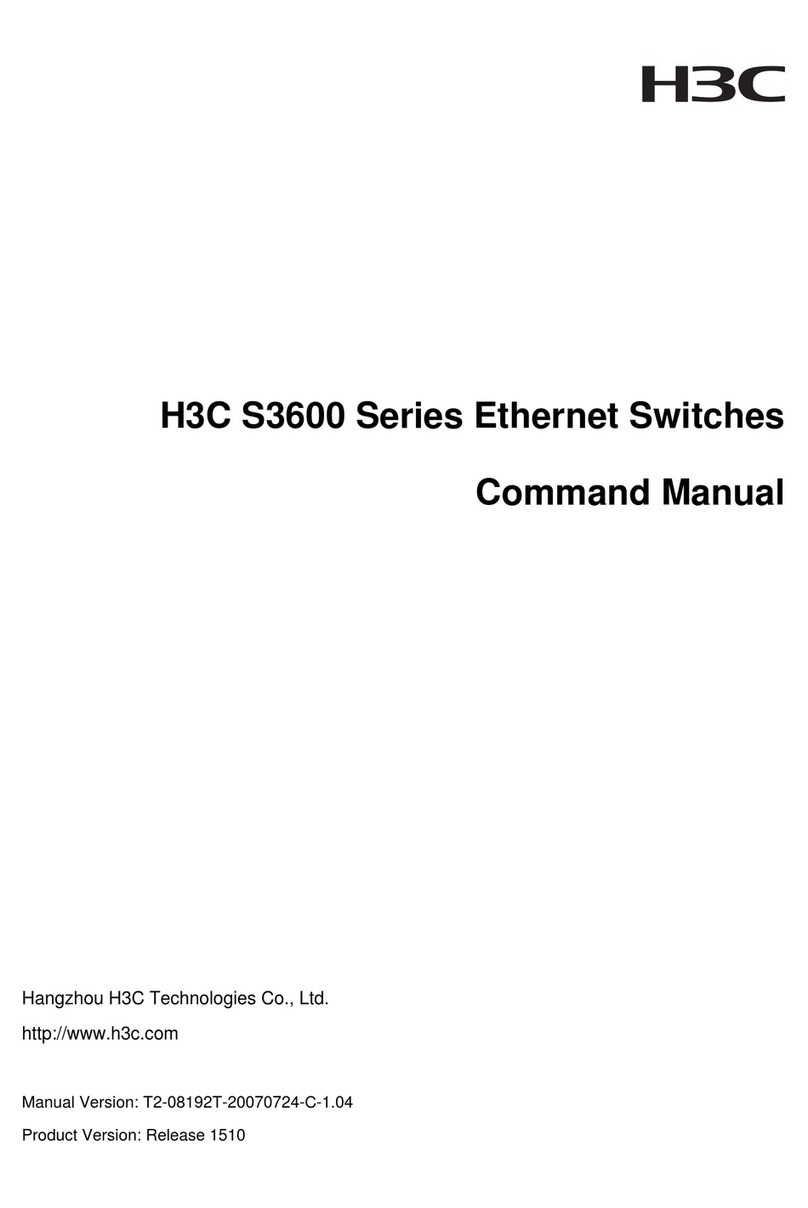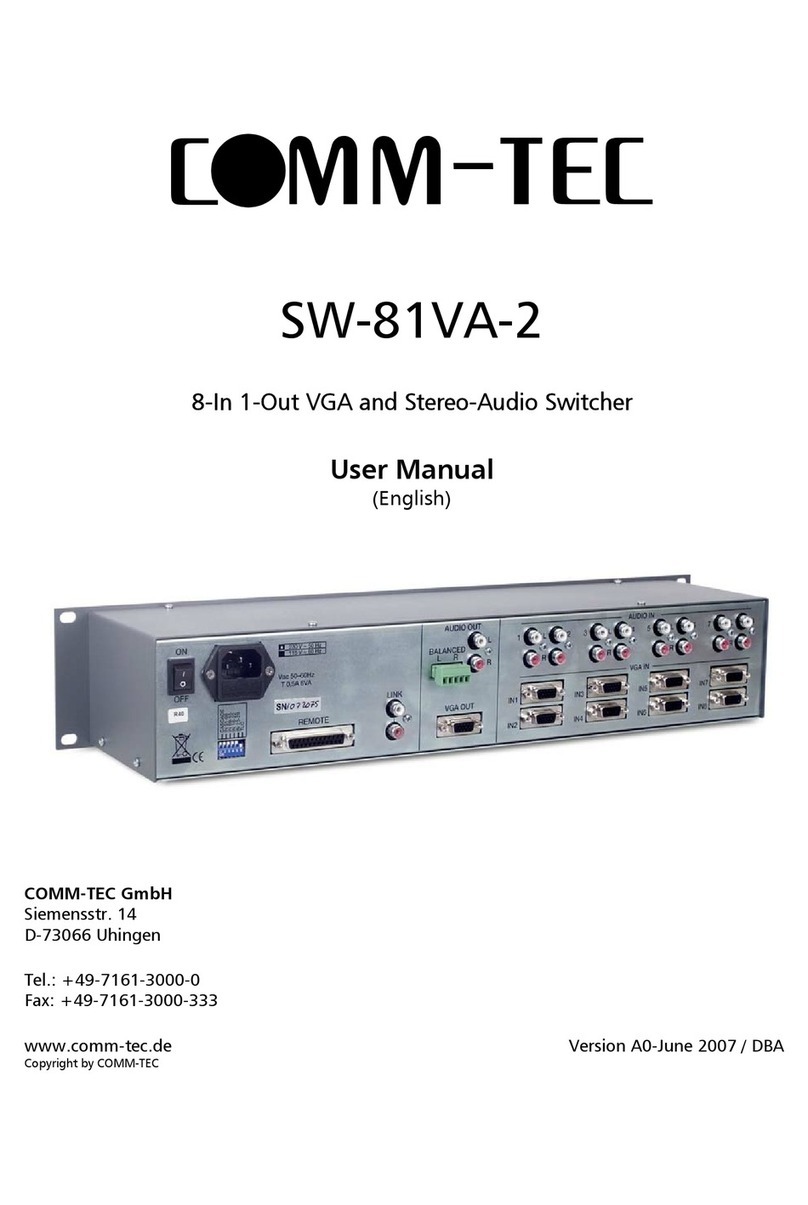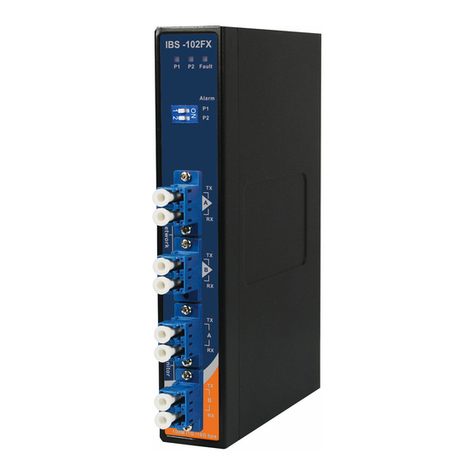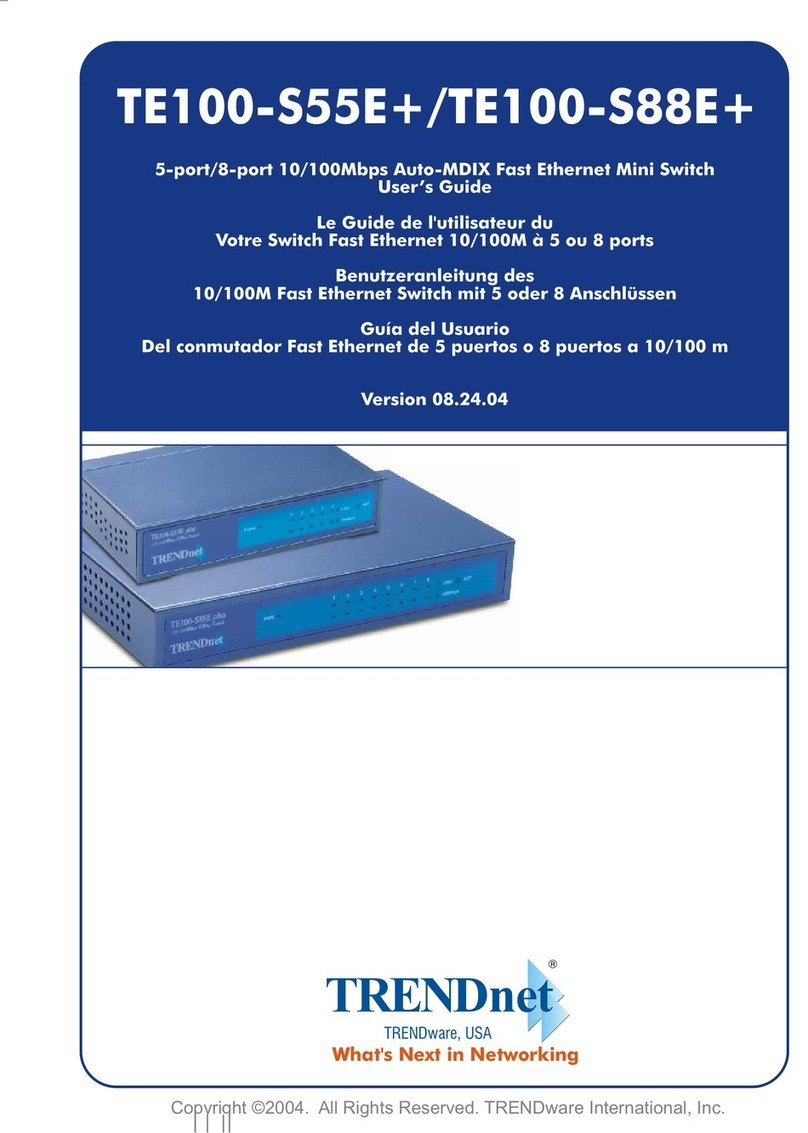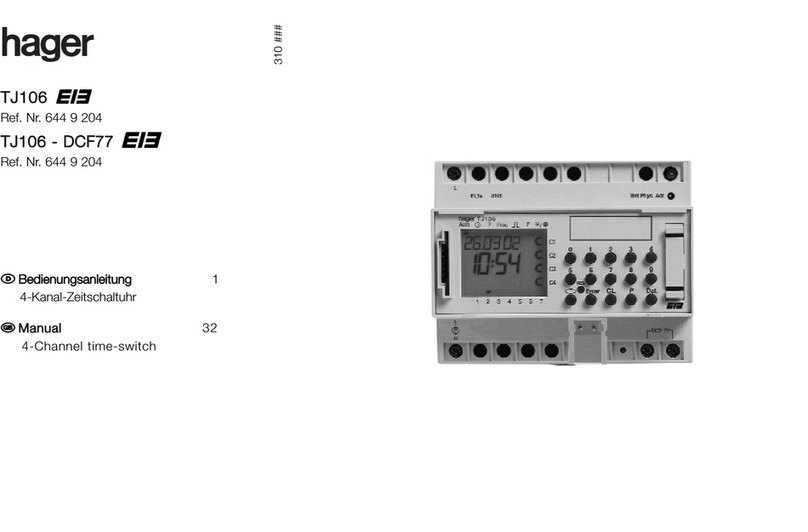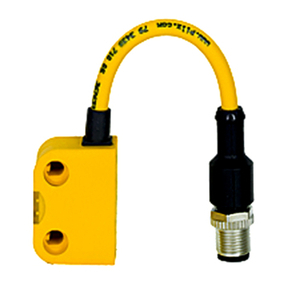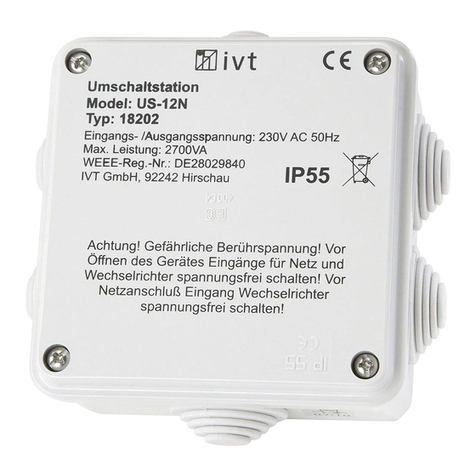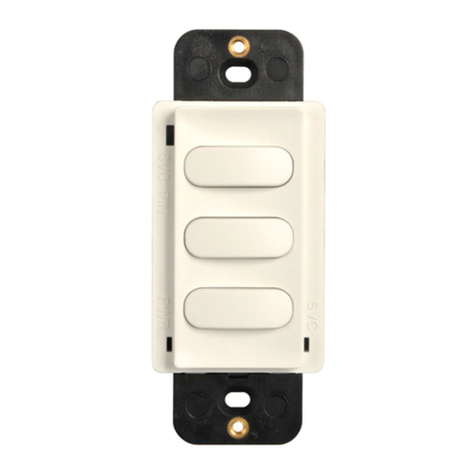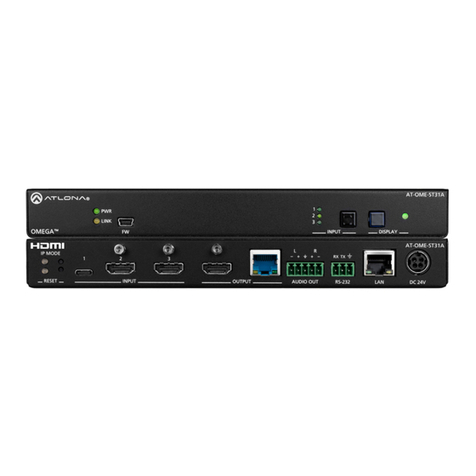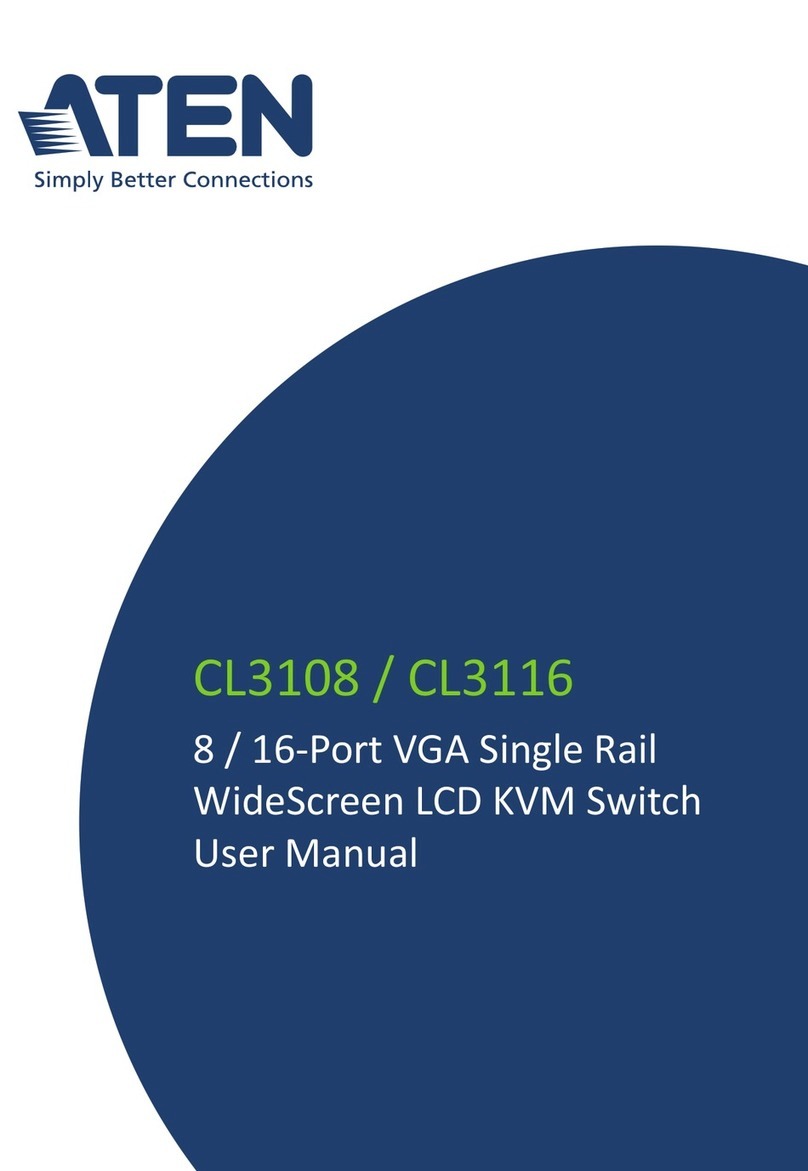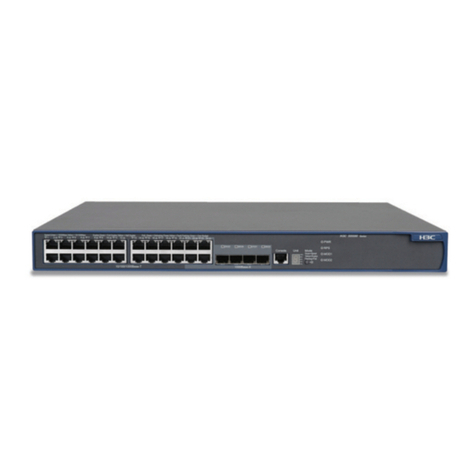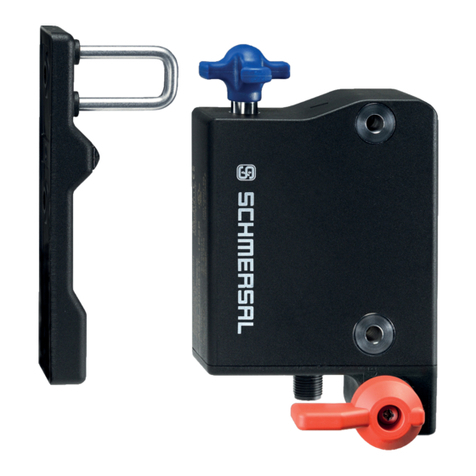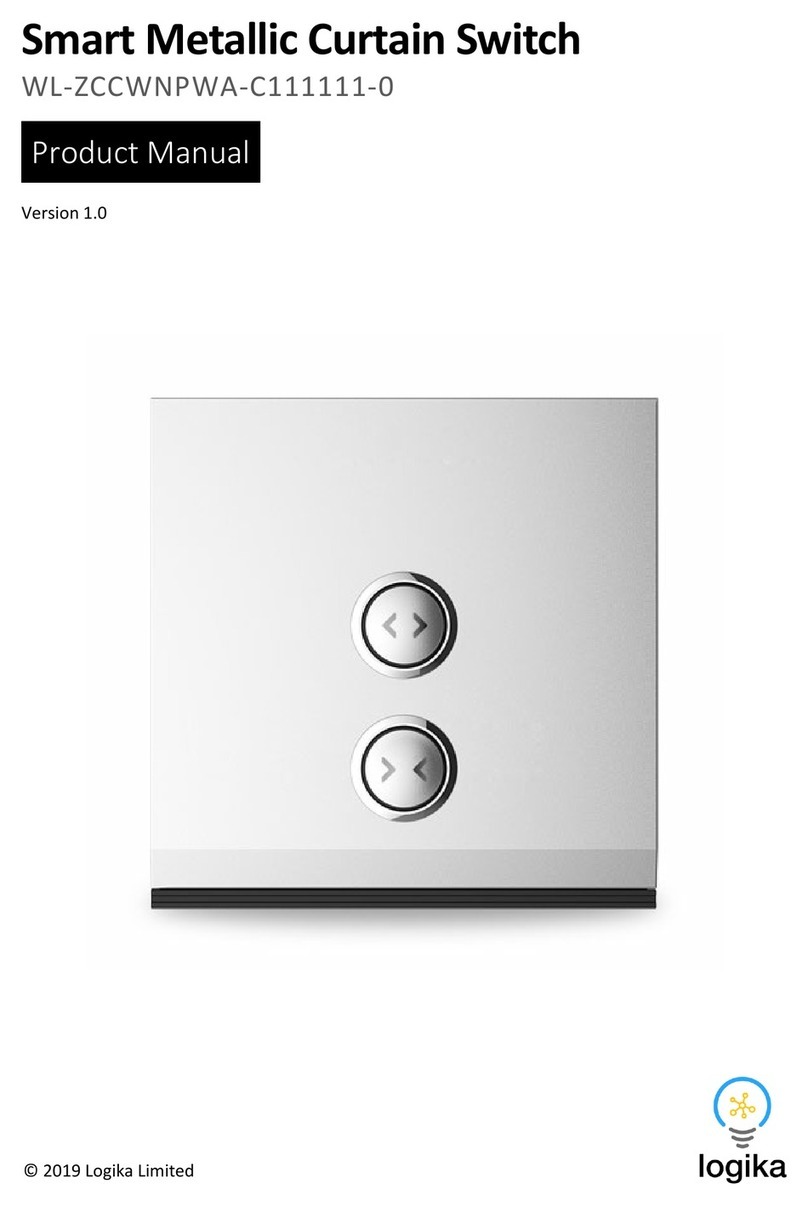Solon 6PS Series User manual

Pressure Switch Instructions
ISO 9001 Document
:D73320.11
Page
1 of 3Uncontrolled if Printed
Rev.: 02-26-21
MODEL SERIES 6PS AND 7PS
PRESSURE OR VACUUM
INSTALLATION
OPERATION
CALIBRATION
INSTALLATION
MOUNTING:
The 6PS and 7PS models will operate satisfactorily in any
position; however, mounting the device vertically will allow the
easiest adjustability and reduce sediment in the sensing
chambers.
PIPING:
While we do not recommend any specific method of piping,
provisions for isolating the device for testing should be
provided in the pipe system during installation.
WIRING:
The "Normally Open" (NO) and "Normally Closed" (NC)
terminals of the MICRO SWITCH show the position of the
contacts in the unactuated position.
CAUTION: When wiring Solon switches, avoid large loops of
wire between the terminals of the MICRO SWITCH/S and
conduit outlet. Wires which contact the movable parts of the
switch mechanism will cause a shift in the settings of the
switch. Neatly done wiring will produce the desired results.
Avoid large diameter wires which are difficult to manipulate in
the housing. We recommend the use of No. 18 Machine Tool
Wire. Avoid the use of a large screwdriver when tightening or
loosening the terminal screws of the MICRO SWITCH. Do not
push hard against the terminals with the screwdriver or over-
torque the screws. Before operation we recommend the
inspection of any pre-wired pressure switch, which may be
part of an assembly, to insure the wires do not touch any of
the movable parts of the mechanism. Further, any time the
cover of the pressure switch is removed, the wiring should be
inspected to insure that no wires are touching the movable
parts of the mechanism.
EXPLOSION-PROOF SWITCHES:
In order to have an Explosion-Proof installation, it is necessary
to seal the conduit near where it is connected to the switch,
according to most codes.
CAUTION: TO PREVENT EXPLOSION, DISCONNECT
SWITCH FROM ELECTRICAL CIRCUIT BEFORE OPENING
COVER. KEEP COVER TIGHTLY CLOSED WHEN SWITCH
IS IN OPERATION.
SET POINT ADJUSTMENT:
Set point adjustments are made by turning the 3/8” hex nut on
the spring stud. Use a 3/8” nut driver to reach the adjustment
nut. Turn the nut clock-wise to increase the setting. See
illustrations on reverse for more detailed calibration instructions.
If unit has been factory set, it will have a tag noting the set
point. If no set point was specified by the customer, the set
point will be adjusted to approximately 1/3 of the range.
MANUAL RESET MODELS:
When the Micro Switch is snapped over, it remains in that
position until the pressure / vacuum returns to normal and the
Reset Button is manually pushed. The common terminal has a
white wire lead, and the solder terminals are marked 1 and 2.
With the pressure switch at normal operating pressure and the
switch reset: (by pushing reset button) terminal 1 is normally
closed; terminal 2 is normally open.
INDICATOR LIGHTS:
115V #6S6 Lamps
OPERATION:
The switch must be supplied with pressure / vacuum and
electricity before operation. Periodic testing will insure the
pressure switch maintains its intended function. Solon
recommends that the covers of all switches be maintained in
place while the pressure switch is in operation.
TESTING:
TEST EQUIPMENT:
Reliable testing will require the following:
1. An accurate manometer or gauge suitable for the range of
switch being tested.
2. A sensitive pressure source.
3. A light source to indicate switch action.
Use of Light Source:
Solon recommends that a test light be used to indicate the
opening or closing of MICRO SWITCH contacts. These test
lights can be battery operated; however, if testing proceeds
with the circuits live, a suitable light must be used which is
compatible with the voltage supplied to the device.
CAUTION: When testing with live circuits, an accidental short
circuit across the MICRO SWITCH terminals will burn the
contacts of the MICRO SWITCH rendering it useless. A Volt-
Ohm-Milliammeter is not recommended for testing the opening
or closing of MICRO SWITCH contacts.
Test Lights - For test bench or field testing, an ordinary flash
light with test leads is acceptable. For accuracy in testing and
calibration, the test lights must be located adjacent to the
manometer so they can be seen out of the corner of the eyes
while the main focus of the eyes is on the manometer
CAUTION: Model 7PS Switches respond to change more
rapidly than most manometers. For accurate manometer
readings, the pressure must be changed slowly to insure the
manometer and switch are at the same pressure at the time
the switch contacts transfer. Leakage in the tubing joining the
manometer to the pressure source to the switch can also
cause inaccurate manometer readings.

Pressure Switch Instructions
ISO 9001 Document
:D73320.11
Page
2 of 3Uncontrolled if Printed
Rev.: 02-26-21

Pressure Switch Instructions
ISO 9001 Document
:D73320.11
Page
3 of 3Uncontrolled if Printed
Rev.: 02-26-21
This manual suits for next models
1
